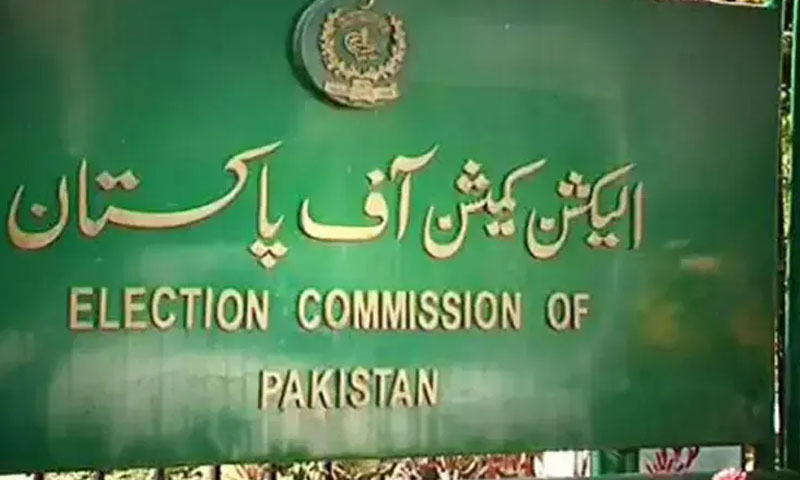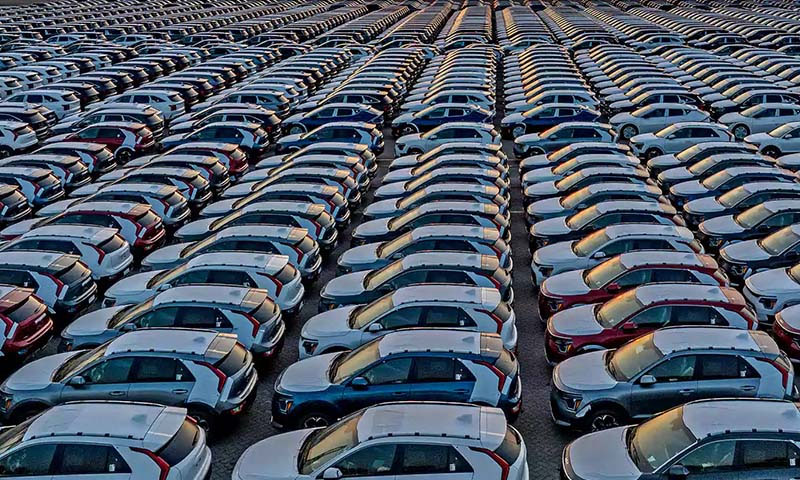- Web Desk
- 8 Hours ago
World Bank report paints a cautious picture of Pakistan’s economy
-

- Web Desk
- Jan 17, 2025

WASINGTON: The World Bank Group released its latest Global Economic Prospects report, detailing Pakistan’s economy gradually recovering but amidst huge, mounting challenges.
The report projects that Pakistan’s growth will strengthen to 2.8 per cent in this current fiscal year (FY 2024-2025). It will grow a further 3.2 per cent in the next fiscal year (FY 2025-2026).
Read more: WEF report highlights Pakistan’s key risks for 2025
The expected growth is attributed to moderate inflation and improved business confidence, which is critical for revitalising the economy after a long period of instability and contraction.
However, the report also details persistent issues such as high unemployment, ongoing inflationary challenges and the urgent need for structural reforms, the latter of which has always been a bohemian task for a state ranked 133 (out of 180) on least corrupt nations list.
India vs Pakistan economy
In comparison to India, the largest economy in South Asia, Pakistan’s growth trajectory appears significantly weaker. India is projected to maintain an impressive growth rate of 6.7 per cent.
Indian economy has flourished in recent years under the leadership of the controversial, extreme right-wing government of Prime Minister Narendra Modi. Despite his contentious political actions, under his leadership, Indian economy witnessed a huge growth driven by a resilient services sector, strong manufacturing and supportive government initiatives.
This stark contrast paints a sombre picture of Pakistan’s economy, which has faced increasing challenges in achieving similar growth levels. The unstable political situation, a ballooning population, and shrinking local industries all have contributed to this.
While India has successfully leveraged its diverse economy to improve its global GDP share, the World Bank’s report noted that Pakistan’s reliance on agriculture and vulnerability to climate change hinders it economic expansion.
The report, however, did not mention how being more import-oriented with little to no domestic production is the leading cause of trade deficit, and consequently, the terrible economic situation. Strong economies buy less goods and services from others, and instead sell more. In other words, their expenses are lesser than their earnings.
This is usually due to a country possessing strong local industries that produce more goods domestically rather than rely on foreign markets. A diversified economy with various sectors involved in producing and exporting goods and services is also important.
Most of all, the focus on selling more advanced, finished products, such as electronics, instead of raw materials or basic goods, plays a huge role in determining a country’s economic output.
While India in the mid-20th century was concentrating on building local industries (especially its automobile sector), it set up trade protections and encouraged locals to buy the domestically produced goods, even when its quality was abysmal – at best.
In contrast, Pakistan under Field Marshall Ayub Khan’s dictatorship saw all trade barriers and protections lifted. Pakistan lived beyond its means, such as equipping the new nation with latest aircrafts for the PIA, while India used more modest ones. While Pakistan’s industrial output in 1960s indeed outpaced even Japan’s, it was badly handled, with no long term planning.
More than 50 per cent of the industries were being funded by aid given to the dictator by the United States, an unreliable source of funds. Workers also were not paid for months, culminating in large section of the population living in what would later become Karachi’s most infamous slums.
Most of all, Ayub Khan and his administration’s mismanagement led to the creation of an oligarchy. While a mere 22 families owned over 70 per cent of all industries in the country, the growing, burgeoning youth was often uneducated. Majority of the industries were also centred in a single city and province.
Pakistan’s economy relative to wider South Asia
When we examine the country’s financial reality against the broader South Asian region, the disparities become even more glaring.
Bangladesh is expected to see a decline in growth to 4.1 per cent in the current fiscal year due to the ongoing political uncertainty. However, the World Bank’s Economic Prospect report projected a recovery of 5.4 per cent in the next fiscal year, dependent on political stability and reforms.
Read more: Pakistan’s industrial sector declines by 3.8 per cent: PBS report
Sri Lanka is forecasted to grow by 3.5 per cent in 2025, edged on by stronger industrial activity. Even the climate-impacted, island nation of Maldives is projected to average 4.7 per cent growth, mainly driven by tourism.
The economic landscape of South Asia does reveal huge disparities among its states. While India leads the region with its rapid growth, Pakistan’s recovery is hindered by structural challenges, bureaucratic inefficacies, massive corruption at all levels, high debt levels and governance issues.
It should be noted the current Indian economic mushroom is dependent on a strong services sector. However, it does have a growing manufacturing base outside the traditional industries it has already captured.
Read more: UAE rolls over $2 billion debt; forex reserves rise
The World Bank report stated that the interconnectedness of South Asian economies complicated the growth. As most countries in the region are commodity importers, rising commodity prices can strain growth prospects.
For Pakistan specifically relying heavily on imports for energy and even raw materials(!), fluctuations in the global commodity prices have and will continue to impact its economic stability.




